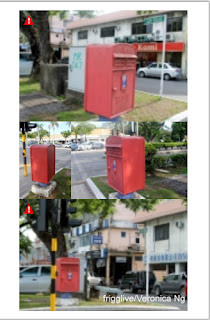AliJon Hand Crafted Silver & Craft
Amongst
the stalls in the arts and crafts bazaar at the Borneo Jazz Festival 2012, AliJon
Hand Crafted Silver stood out because of the towering orange-red Heliconias in
a large glass vase.
Closer
inspection revealed an assortment of fine hand crafted silver items on display
at the main counter while traditional Japanese “Washi” hand made craft items were
displayed on the side.
The
owners of the stall, John Ng and his wife Alice Ho were very friendly and it
didn’t take very long for us to get chatting. We found the couple to be warm
and approachable, with John eager to promote recycling and share his creative
methods with us.
Washi
is the light, strong traditional Japanese paper made by hand from the
inner-bark fibers of trees and plants. The name Washi literally means
"Japanese paper".
Making
Washi involves a long and intricate process where certain types of tree bark are
stripped, boiled and then dried. The fibers are boiled with lye to remove the
starch, fat and tannin, and then placed in running water to remove the lye.
The
fibers are then bleached and any remaining impurities in the fibers are picked
out by hand. It is laid on a board and beaten to a pulp. Wet balls of pulp are
mixed with water, scooped onto a screen and shaken to spread the fibers evenly.
The addition of the pounded fibre to a liquid solution, combined with fermented
hibiscus root produces a paste-like substance when it is mixed.
It
is this "paste" which is tossed until evenly spread on a bamboo mesh
screen to form each sheet of paper. The sheets are piled up wet, and later laid
out to dry on wood in the sun. Considering the amount of work involved, John
was selling his items for a song.
Looking
at his exquisitely detailed silver pieces, it would never occur to you that John
is entirely a self-taught artist. He studied architecture and socialogy, also took
on liberal arts for his double major in Iowa, USA. While in the US, this gifted
guy also found the time to work as a chef to satisfy his creative streak.
On
completing his studies, he came back to Sarawak and having plenty of time on
his hands, started painting. His work attracted the attention of the Sarawak
Arts Society, and before long he was working in an architectural firm.
When
Kuching (North) became a city, John was selected to design the Mayor’s robe,
mace, chain of office and official crest. Recognition for his creative talent
didn’t end there as he was again picked to helm the art department when
Hollywood came to Sarawak to make the movie “Farewell To The King”.
In a twist of fate, John ended up working in the computer graphics department of
Shell, developed a cough and went to the inhouse clinic where Alice Ho attended
to his registration. Over several visits, the artist became smitten with Alice,
and plucked up the courage to send her a bouquet of flowers with a witty and
creative message:
“I
always see you when I am ill,
Can
I see you now that I am well?”
Apparently
Alice must have seen the humor in the message as well as the couple are now
married and blessed with two teenage girls.
Soon
after that John became the leader of the art group in Shell, and a British lady
friend of his saw so much potential in him that she bought him some raw silver
and challenged him to come up with some original pieces.
John
duly taught himself silverwork, improvising along the way and now he is
devoting his full time to his creative passion, quickly making a name for
himself and his own brand AliJon Collection.
He
still finds time to teach art and craft making to the Penans and Asli in an
effort to encourage them to not only keep their culture and traditions alive
but also as a means for them to earn income too.
If
you like reasonably priced limited edition hand made silver, you can contact
John at alijon_john@yahoo.com
Labels: Alice Ho, AliJon Hand Crafted Silver, Borneo Jazz Festival, Japanese paper craft, John Ng, Miri, Washi





























